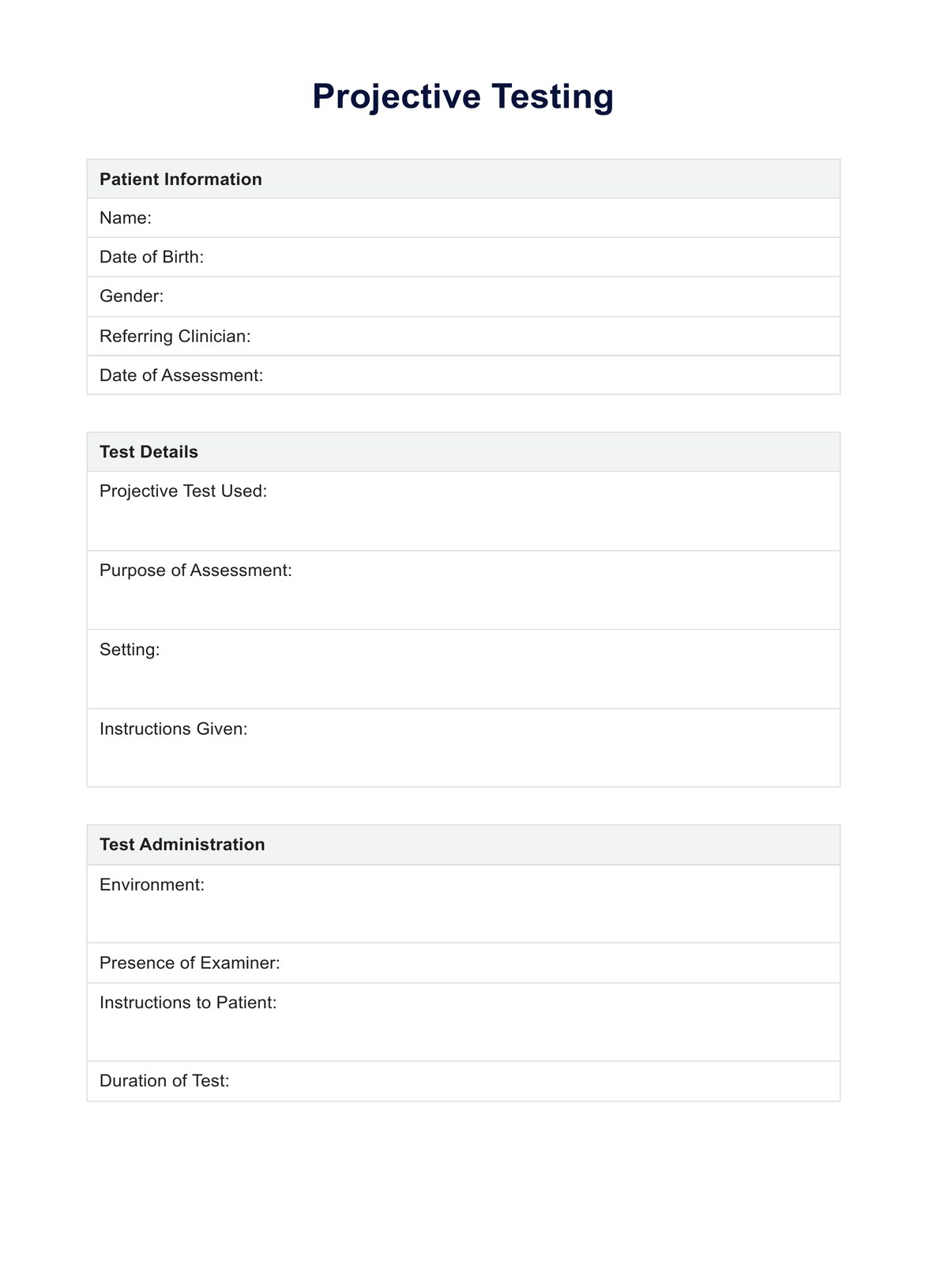Unlike typical "right or wrong" assessments, projective tests present ambiguous stimuli like inkblots, pictures, or incomplete sentences. You, the test-taker, project your inner thoughts, feelings, and motivations onto these, revealing unconscious aspects of your personality.

Projective Test
Explore the human mind with projective tests, revealing insights into thoughts, emotions, and personality through ambiguous stimuli.
Use Template
Projective Test Template
Commonly asked questions
here's a whole family of them, each offering a unique window into the psyche. Some popular examples include Rorschach Inkblot Test, Thematic Apperception Test (TAT), and Draw-a-Person Test.
They're valuable tools, but not perfect. Interpretation requires expertise and training, and results can be subjective and influenced by the tester's own biases.
EHR and practice management software
Get started for free
*No credit card required
Free
$0/usd
Unlimited clients
Telehealth
1GB of storage
Client portal text
Automated billing and online payments











